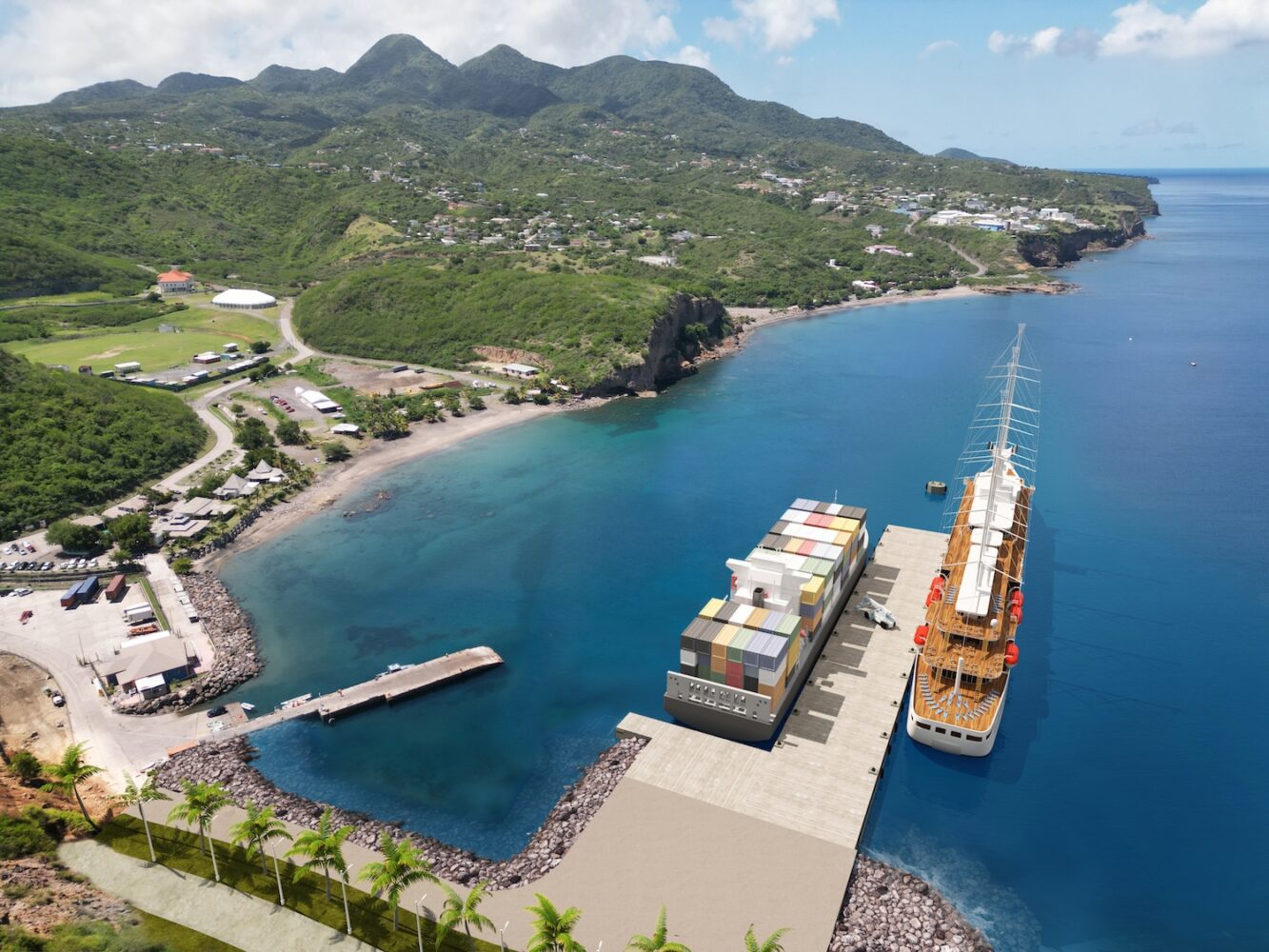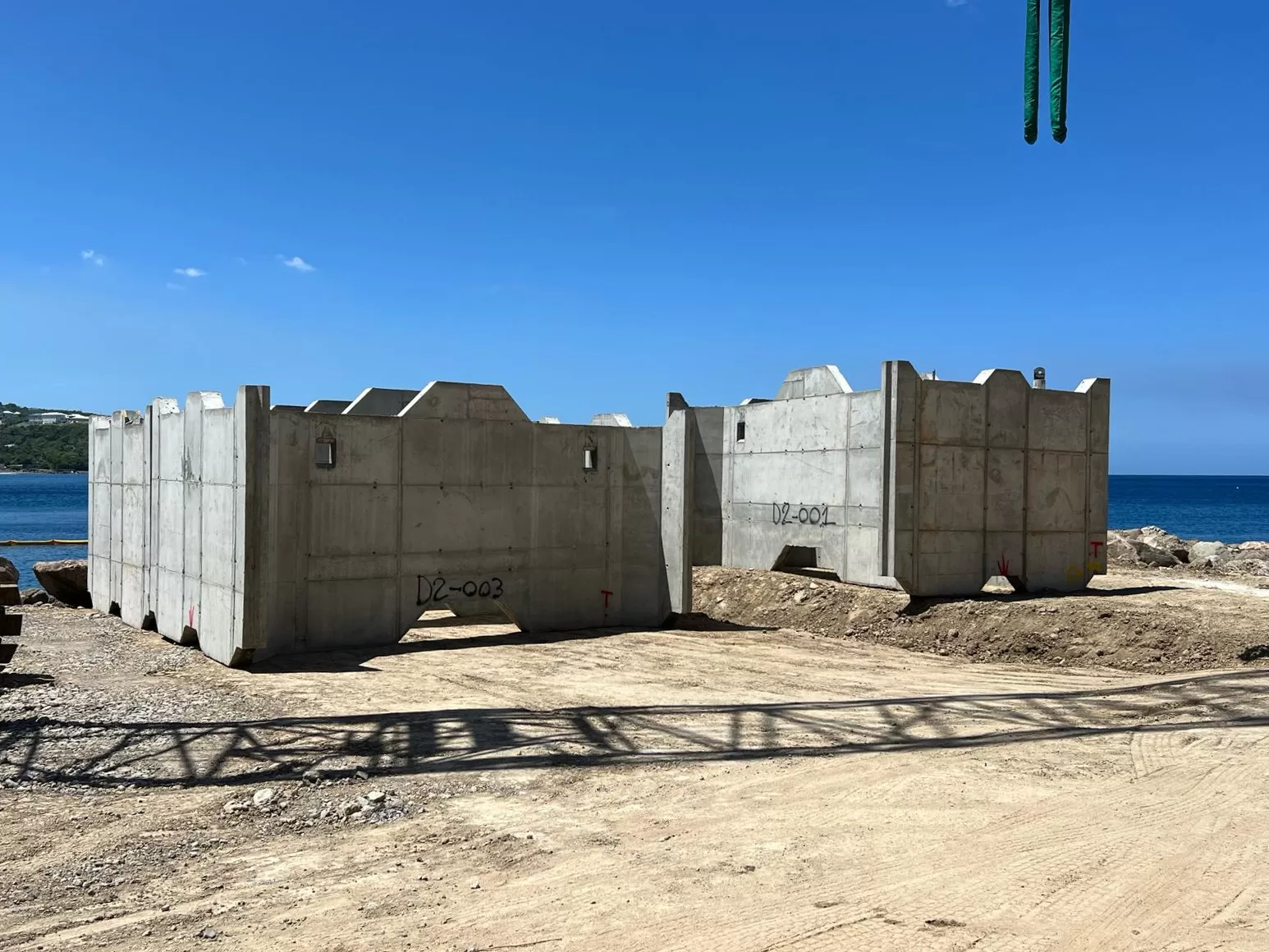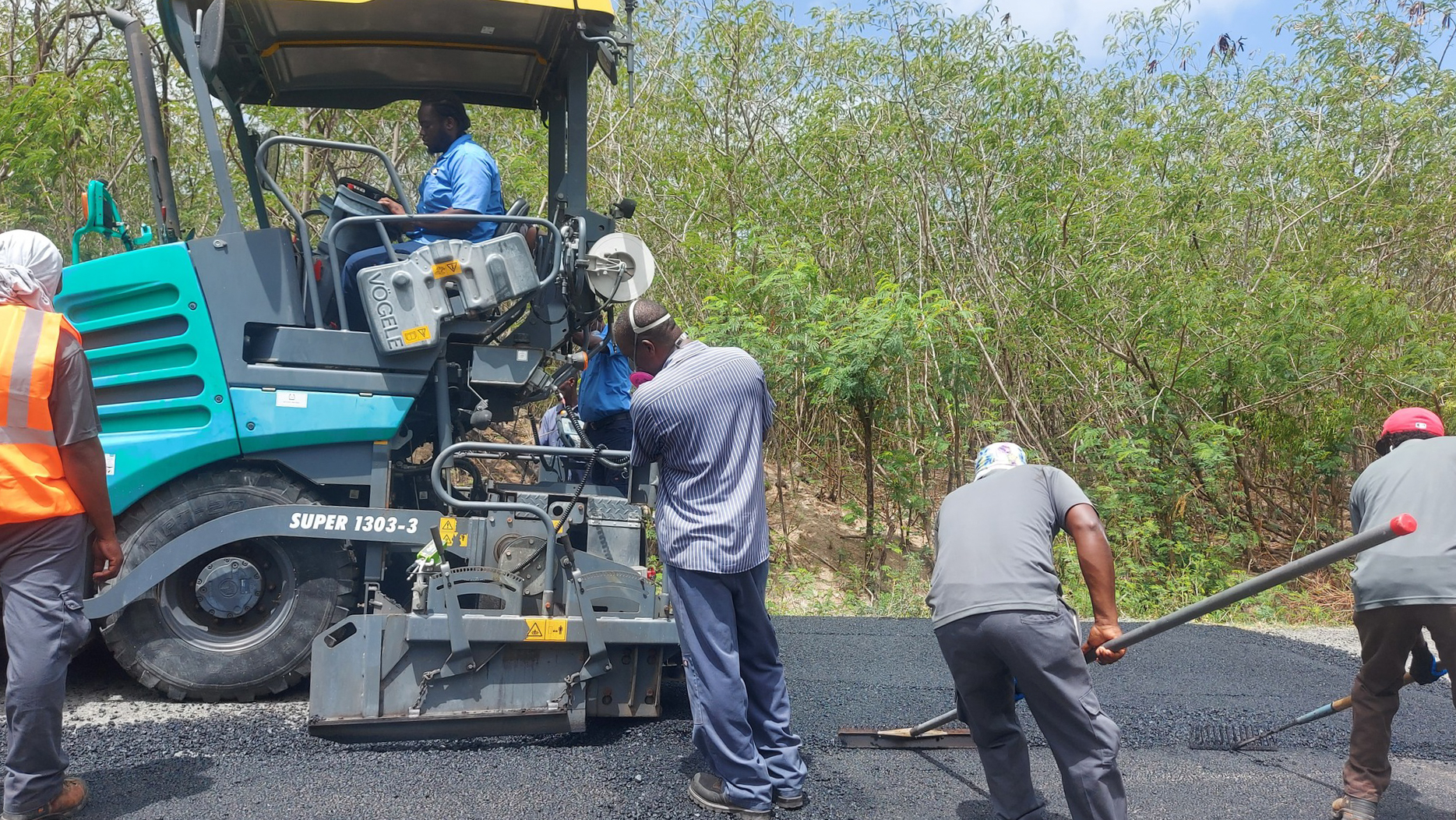Mild corrosion of rebar is a normal aspect of construction, according to Works Minister Samuel Joseph.
The deputy premier was responding to a question from opposition leader Paul Lewis during the Montserrat Legislative Assembly on 30 January.
Lewis asked why there is an “obvious corroded appearance” on the steel used in the construction of the new port at Little Bay.
Joseph responded: “It is not only expected but can be beneficial, as stated by the Concrete Society in 1966.”
He said mild corrosion aids in the bonding process between steel and concrete, however, it is imperative that the rebar be free from loose rust or mild scale.
“Any rebar showing more than mild surface corrosion or compromising the structural integrity should be replaced,” he said.
Lewis also asked the minister why the steel used in the construction is not coated.
Joseph said that the project specifications do not mandate the coating of concrete reinforcing steel.
“This decision is grounded in a balance between immediate protection and long-term structural integrity,” he said.
“Epoxy coatings, while offering some immediate protection, can reduce the bonding strength between steel and concrete.
“Over time, these coatings may age and trap moisture, accelerating the corrosion process.”
He said that instead of coating, the specifications demand a minimum concrete cover of 75 millimetres.
This is a “standard and effective practice” in marine environments for protecting steel, he said.
No local sand
The opposition leader also brought up the topic of local sand, which was disqualified from being used in the construction of the port due to the chance of negative chemical reactions.
Joseph said the Marine Concrete Specifications clearly state that “all aggregates and sand shall be demonstrated innocuous to alkali silica reaction (ASR)”.
ASR is a chemical reaction in concrete between alkali and silica components, which can lead to expansion, cracking and long-term structural damage.
For materials not meeting the ASR expansion limits, they can only be used as a supplemental cementitious material, also meeting an expansion criterion.
The CTL Group, based in Skokie, Illinois, conducted a test for alkali reactivity on local Montserrat material, the deputy premier said.
Their report, dated April 14, 2023, revealed that this material exceeded the threshold of ‘innocuous behaviour’ for ASR.
“This indicates a high likelihood of the sand causing detrimental ASR in the concrete, leading to its disqualification,” Joseph said.
“Using such material could jeopardise the integrity and durability of the port’s infrastructure.”
A government press release on 2 February said production had begun on more than 300 reinforced concrete caissons.
This is critical for the construction of the 130-metre long pier and the mooring dolphin, it said.




